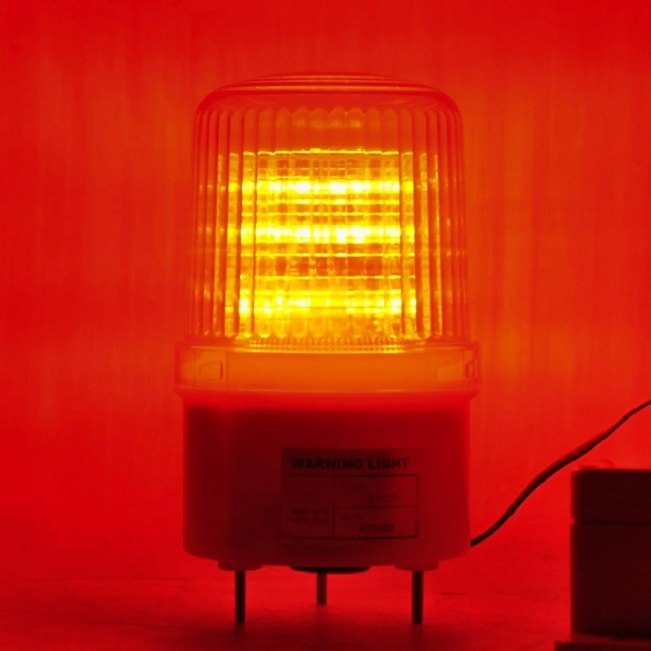When it comes to industrial settings, safety is the number one priority. Whether you’re in manufacturing, construction or mining, ensuring that everyone goes home safe at the end of the day is crucial. One way to maintain a safe work environment is by using warning lights. These small yet mighty devices play a significant role in alerting workers to potential hazards and ensuring that operations run smoothly and safely. So, let’s dive into why they are so essential and how they keep the industrial sites safe and sound.
Roles of Warning Lights

In industrial settings, these lights serve as bearers of news. They communicate important information quickly and efficiently, cutting through the noise and chaos of a bustling worksite. When heavy machinery is moving or hazardous materials are being handled, there’s no time for second-guessing, the indispensable warning light provides immediate visual cues that can prevent accidents before they happen.
Think about the last time you were in a factory or a large warehouse. The workspace is filled with the hum of machinery and the chatter of workers, so in such a setting auditory warning can easily get lost. That’s why lights designed to warn are much better. They stand out and draw attention to them with their bright flashing signals.
Types of Warning Lights
There are several types of these lights used in industrial settings, each serving a specific purpose and designed to be effective in different scenarios. Two of the most common types are beacon lights and strobe lights.
Beacon lights are designed primarily for signalling and warning purposes, providing continuous or periodic visual alerts. They often emit a rotating or flashing pattern that can be seen from a distance, making them ideal for announcing the moving of a vehicle, or other potential hazards that can happen.
Strobe lights, on the other hand, are known for their intense pulsating flashes. These lights are particularly good at grabbing attention, even in the busiest and noisiest of environments. They are often used in emergencies, where quick and unmistakable alerts are crucial. For example, in the event of a gas leak or fire, a strobe light can signal the need for immediate evacuation, ensuring that everyone is aware of the danger.
Despite their differing characteristics, both of these lights play a crucial role in ensuring safety and communication across various sectors. Each type is tailored to suit in specific application needs, ranging from the urgency of emergency situations to the ongoing monitoring of industrial processes or navigation support.
Benefits of Warning Lights

The benefits of a warning light in industrial setting are numerous. The first and most important benefit is safety. These lights alert workers to potentially hazardous conditions such as equipment malfunctions, overloads or emergency situations such as tool breakage or any type of leakages. Prompt notifications allow operators to take immediate action to mitigate risks and prevent accidents, protecting both the personnel and equipment.
This proactive approach to safety reduces the risk of injury and even saves lives. When workers can easily identify danger zones, they can take appropriate precautions. Moreover, these lights contribute to operational efficiency. In large-scale operations, communication is key and visual signals are a highly effective form of communication.
By using a system of warning lights, companies can streamline processes and ensure everyone is on the same page. For example, if a particular area in the warehouse or facility is undergoing renovations or anything similar, these signs can inform the workers to avoid that area, thus preventing accidents and even saving time.
Having these warning LED lights around and caring for your workers also has a significant impact on their productivity and even their will to work. Knowing that there are safety measures in place can reassure employees that they are being protected, therefore working without feeling scared. This positive workspace benefits both the employees and the employer and it enhances the overall performance of the company.
Maintenance
Just like any other piece of equipment, a warning light also requires regular maintenance to ensure that it functions correctly. A malfunctioning light can be as dangerous as not having one at all and it provides a false sense of security. Maintenance involves checking for any signs of wear and tear, ensuring that it is clean and unobstructed, and checking that the electrical connections are secure.
In some cases, it might be necessary to replace bulbs or batteries to make sure that the lights are in optimal performance. So, implementing a routine maintenance plan for them should be a part of every safety protocol because by keeping track you can ensure that the lights are always ready to perform their critical safety functions. In the busy environment of industrial settings where the stakes are high and safety is paramount, these lights are a must.
They play an indispensable role in alerting workers, ensuring smooth operations and fostering a safe and productive working environment. The different types that exist serve different purposes, however, they all have one goal – to keep the workspace safe for everyone there. By investing in high-quality lights, you can create a culture of safety that boosts morale and productivity.
























